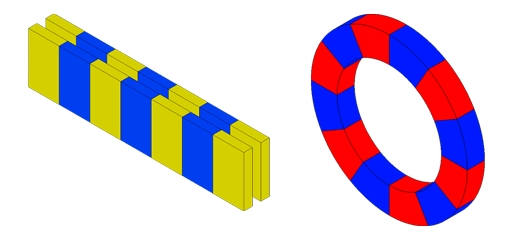By Amine Boussada |
20/04/2022
Bow-Tie Antennas
5G wireless communication is a reality now, thanks to its obvious power and advantages it offers; for example, it offers a highly dependable universal connectivity with huge volumes and diversity of data as well as a broader bandwidth. Traditionally, microstrip phased array antennas are used in 5G communication systems; thanks to its compactness, high efficiency, and easy integration in MMIC; nonetheless, they suffer from a limited bandwidth. To achieve a wider bandwidth, Bow-Tie antennas, with a pair of radiators printed on both sides of the substrate has been suggested by several authors.
Fig. 1. An 8-Element Array Bow-Tie Antenna Array
HFWorks Modeling of Bow-Tie Antenna
The virtual prototyping antenna simulator, HFWorks, is used to build and simulate a 10x5.5x1.5 mm double-sided Bow-Tie antenna array, printed on a 0.94 mm FR4 substrate, having eight elements; 5G frequency from 24 to 32 GHz. Below are some of the HFWorks results:
Fig. 2. Return loss
Fig. 3. Insertion loss
Fig. 4. Gain
Fig. 5. Total efficiency
Fig. 6. Beam Steering Animation
From the above results, clearly, this Bow-Tie antenna array has a wide bandwidth over the 5G frequency band from 24 to 32 GHz; it also has an impressive beam steering capability.
HFWorks simulation reveals the potential of Bow-Tie antennas for 5G communication. With a wide bandwidth spanning 24 to 32 GHz and remarkable beam steering capabilities, these antennas offer significant advantages over traditional microstrip phased arrays. The Bow-Tie design, printed on an FR4 substrate, demonstrates superior performance, making it a promising candidate for next-generation wireless communication systems. Further research and development in this area could lead to even more efficient and reliable 5G networks.
